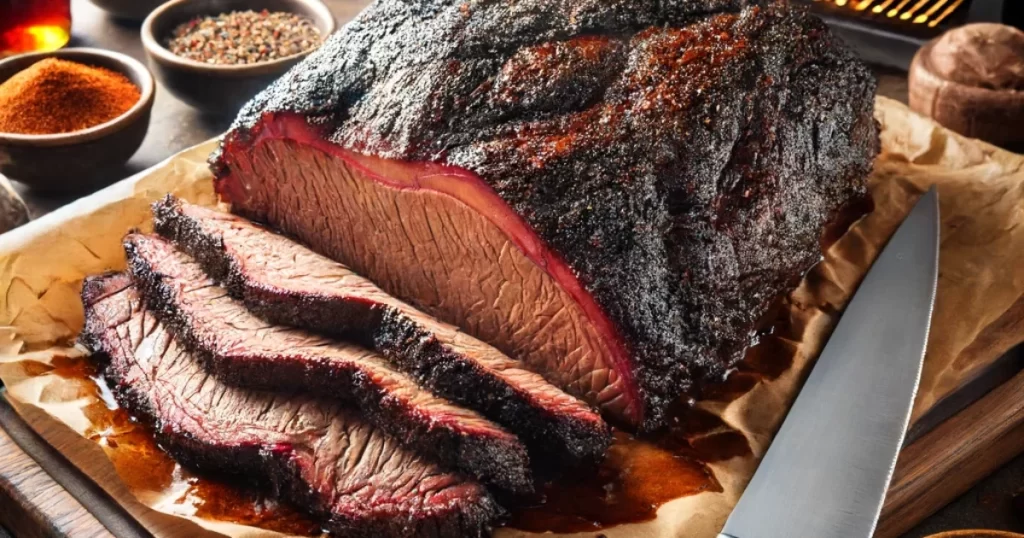How Long to Cook Brisket After Wrapping
Brisket is a beloved cut of meat, especially in barbecue culture, known for its rich flavor and tenderness when cooked correctly. One of the key techniques in cooking brisket is the wrapping process, which can significantly affect cooking time and the final quality of the meat. In this comprehensive guide, we will explore how long to cook brisket after wrapping, the reasons for wrapping, the different methods of wrapping, and tips for achieving the perfect brisket.
Understanding Brisket
Before diving into the cooking process, it’s essential to understand what brisket is and its unique characteristics:
- Cut of Meat: Brisket comes from the breast or lower chest of the cow. It is a tough cut of meat that requires long, slow cooking to break down the connective tissues and achieve tenderness.
- Types of Brisket: There are two main cuts of brisket: the flat and the point. The flat is leaner and more uniform in thickness, while the point has more marbling and fat, making it juicier.
- Cooking Methods: Brisket can be prepared using various methods, including smoking, braising, and slow cooking. Each method requires different cooking times and techniques.
The Wrapping Process
Why Wrap Brisket?
Wrapping brisket is a technique that helps retain moisture and heat during the cooking process. The wrapping serves several purposes:
- Prevents Drying Out: Wrapping helps to trap moisture, preventing the brisket from drying out, especially during long cooking times.
- Accelerates Cooking: Wrapping can speed up the cooking process by creating a steaming effect, which helps the meat reach its target temperature more quickly.
- Improves Tenderness: The moisture retained in the wrap helps to break down connective tissues, resulting in a more tender final product.
- Enhances Flavor: Wrapping can help maintain the smoky flavor by preventing the meat from becoming too dry and allowing the flavors to concentrate.
When to Wrap Brisket
The ideal time to wrap brisket is typically when it reaches an internal temperature of 165°F to 170°F (74°C to 77°C). At this point, the brisket may enter what is known as “the stall,” where the internal temperature plateaus due to moisture evaporation. Wrapping the brisket helps to overcome this stall and continue cooking effectively.
Cooking Time After Wrapping
The cooking time for brisket after wrapping can vary based on several factors, including the size of the brisket, the cooking temperature, and the desired level of tenderness. Here’s a general guideline:
| Cooking Temperature | Approximate Cooking Time After Wrapping | Final Internal Temperature |
|---|---|---|
| 225°F (107°C) | 4-6 hours | 195°F – 205°F (90°C – 96°C) |
| 250°F (121°C) | 3-5 hours | 195°F – 205°F (90°C – 96°C) |
| 275°F (135°C) | 2-4 hours | 195°F – 205°F (90°C – 96°C) |
Factors Influencing Cooking Time
- Size of the Brisket: Larger briskets will naturally take longer to cook than smaller ones. A typical whole packer brisket can weigh between 10 to 20 pounds.
- Cooking Method: Whether you are using a smoker, oven, or slow cooker can affect the cooking time. Smokers generally require longer cooking times compared to ovens.
- Desired Tenderness: The longer you cook the brisket, the more tender it will become. However, cooking it too long can lead to dryness, so it’s essential to monitor the internal temperature.
- Type of Wrap: The material used for wrapping (aluminum foil vs. butcher paper) can also impact cooking time. Foil tends to trap heat and moisture more effectively, potentially speeding up the cooking process.
Wrapping Methods
1. Aluminum Foil
Pros:
- Creates a tight seal that traps moisture effectively.
- Speeds up cooking time.
Cons:
- Can soften the bark (the crust formed on the outside of the brisket).
- May lead to a less smoky flavor compared to other methods.
How to Wrap:
- Lay out a large piece of heavy-duty aluminum foil.
- Place the brisket in the center and wrap it tightly, ensuring there are no openings.
2. Butcher Paper
Pros:
- Allows some smoke to penetrate, enhancing flavor.
- Helps maintain a firmer bark compared to foil.
Cons:
- May take slightly longer to cook than foil-wrapped brisket.
- Requires more skill to wrap effectively.
How to Wrap:
- Use pink butcher paper, which is designed for cooking.
- Lay the paper out, place the brisket in the center, and fold it tightly, ensuring it is well-sealed.
Monitoring the Brisket
Using a meat thermometer is essential for ensuring your brisket reaches the desired internal temperature. Here are some tips for monitoring:
- Insert the Thermometer: Place the thermometer probe into the thickest part of the brisket, avoiding fat pockets.
- Check Regularly: After wrapping, check the temperature every 30 minutes to avoid overcooking.
- Resting Time: Once the brisket reaches the target temperature, remove it from the heat and let it rest for at least 30 minutes (up to 2 hours) while still wrapped. This allows the juices to redistribute throughout the meat.
Serving the Brisket
After the resting period, it’s time to slice and serve your brisket:
- Slicing: Use a sharp knife to slice against the grain for maximum tenderness. This is crucial for ensuring each bite is easy to chew.
- Serving Suggestions: Brisket can be served with various sides, such as coleslaw, baked beans, or cornbread. It can also be used in sandwiches, tacos, or as a main dish.
- Storing Leftovers: If you have any leftover brisket, store it in an airtight container in the refrigerator for up to 4 days. It can also be frozen for longer storage.
Conclusion
Cooking brisket can be a rewarding experience, especially when you understand the importance of wrapping and the cooking process. By knowing when to wrap your brisket and how long to cook it afterward, you can achieve a tender, flavorful result that will impress your family and friends. Whether you’re a seasoned pitmaster or a beginner, mastering the art of brisket cooking will elevate your barbecue skills.
FAQ Section
1. How long should I smoke a brisket before wrapping it?
Most experts recommend smoking a brisket for about 6 hours before wrapping it, typically when it reaches an internal temperature of 165°F to 170°F.
2. Can I wrap my brisket too early?
Yes, wrapping too early can prevent the bark from forming properly. It’s best to wait until the brisket has developed a good crust and is nearing the stall.
3. What is the ideal internal temperature for brisket?
The ideal internal temperature for brisket is between 195°F and 205°F (90°C – 96°C) for optimal tenderness.
4. How do I know when my brisket is done?
Use a meat thermometer to check the internal temperature. Additionally, you can test for tenderness by inserting a probe; it should slide in easily when the brisket is done.
5. Is it necessary to wrap brisket?
While it’s not strictly necessary, wrapping brisket can help retain moisture, speed up cooking time, and improve tenderness, making it a popular technique among many cooks.For more detailed information on cooking brisket, you can refer to the USDA’s Food Safety and Inspection Service.



